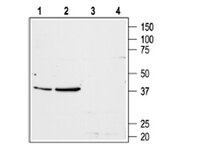In utero exposure to the antiandrogen di-(2-ethylhexyl) phthalate decreases adrenal aldosterone production in the adult rat.
Martinez-Arguelles, DB; Guichard, T; Culty, M; Zirkin, BR; Papadopoulos, V
Biology of reproduction
85
51-61
2011
显示摘要
We previously reported that in utero exposure of the male fetus to the plasticizer di-(2-ethylhexyl) phthalate (DEHP) resulted in decreased circulating levels of testosterone in the adult without affecting Leydig cell numbers, luteinizing hormone levels, or steroidogenic enzyme expression. Fetal exposure to DEHP resulted in reduced mineralocorticoid receptor (MR; NR3C2) expression in adult Leydig cells. In the present studies, treatment of pregnant Sprague-Dawley dams from Gestational Day 14 until birth with 20, 50, 100, 300, or 750 mg kg(-1) day(-1) of DEHP resulted in significant sex-specific decreases in serum aldosterone but not corticosterone levels at Postnatal Day 60 (PND60) but not at PND21. There was no effect on circulating levels of potassium, angiotensin II or adrenocorticotropin hormone (ACTH). However, there was reduced expression of AT receptor Agtr1a, Agtr1b, and Agtr2 mRNAs. The mRNA levels of proteins and enzymes implicated in aldosterone biosynthesis were not affected by in utero DEHP treatment except for Cyp11b2, which was decreased at high (≥ 500 mg kg(-1) day(-1)) doses. The data presented herein, together with our previous observation that aldosterone stimulates testosterone production via an MR-mediated mechanism, suggest that in utero exposure to DEHP causes reduction in both adrenal aldosterone synthesis and MR expression in Leydig cells, leading to reduced testosterone production in the adult. Moreover, these results suggest the existence of a DEHP-sensitive adrenal-testis axis regulating androgen formation. | 21389346
 |








